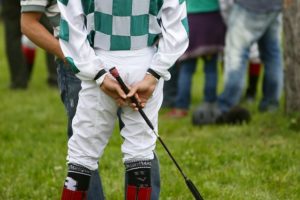Has David Probert ever ridden a Group 1 winner?
Perhaps a little surprisingly, the short answer is no, he hasn’t. Born on January 1, 1988 in Bargoed, South Wales, Probert attended the British Racing School in Newmarket and subsequently became apprenticed to Andrew Balding at Park House Stables in Kingsclere, near Newbury. In 2008, he shared the apprentice jockeys’ title with another Balding protégé, William Buick, both jockeys having ridden 50 winners apiece.
Unlike Buick, who became stable jockey to John Gosden in 2010 and a retained jockey for Sheikh Mohammed’s Godolphin operation in 2015, Probert has spent his whole career with Andrew Balding. Prior to 2021, his best seasonal tally came in 2019, when he rode 112 winners but, having reached the landmark of 1,000 winners on British soil at Lingfield on June 8, 2020, reached his fastest ever century at Nottingham on August 10, 2021. Indeed, at the time of writing, Probert is enjoying far and away his most successful season ever, numerically, with 135 winners to his name.
However, despite a career-best season, which has included two high-profile victories on Sandrine in the Duchess of Cambridge Stakes and Bangkok in the Sky Bet York Stakes – both of which are Group 2 contests – a maiden Group 1 win remains elusive. Reflecting on his lack of success at the highest level, Probert said, ‘Yet to still find that one superstar, but hopefully it will come and hopefully within the next thousand winners.’ Surely it is only a matter of time.
 Obviously there are exceptions, notably Lester Piggott, at 5’8″, and Richard Hughes and Sir Anthony McCoy, both at 5’10”, but most male jockeys are well below average height. Typically, jockeys riding on the Flat stand between 4’10” and 5’6″ tall; taller jockeys, such as Piggott and Hughes, must make significant sacrifices to maintain their weight below its natural level, sometimes for years on end. Although in Britain the minimum riding weight for National Hunt jockeys is 10st 0lb, as opposed to 8st 0lb for Flat jockeys, eighteen months after his retirement Sir Anthony McCoy freely admitted to having put on two stone in the interim.
Obviously there are exceptions, notably Lester Piggott, at 5’8″, and Richard Hughes and Sir Anthony McCoy, both at 5’10”, but most male jockeys are well below average height. Typically, jockeys riding on the Flat stand between 4’10” and 5’6″ tall; taller jockeys, such as Piggott and Hughes, must make significant sacrifices to maintain their weight below its natural level, sometimes for years on end. Although in Britain the minimum riding weight for National Hunt jockeys is 10st 0lb, as opposed to 8st 0lb for Flat jockeys, eighteen months after his retirement Sir Anthony McCoy freely admitted to having put on two stone in the interim.